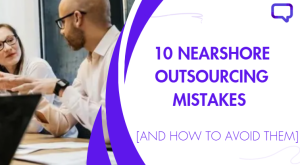Before starting your own Shopify store, it’s important to know that it won’t be instantly profitable. Building your Shopify store will take time and patience, but with the right strategy you can have an extremely profitable store that brings in sales from customers all over the world! This article will teach you how to build your Shopify store, so check out the tips below for getting started on this journey.
Step 1. Set up goals
Getting started on your journey of turning your online shop into a profitable business, it’s important to set yourself some goals. The first step is setting up revenue and traffic-based goals. What revenue do you want from your store? Are you aiming for $10,000 per month or $1 million? Once you know what revenue target you’re looking at, work out how many customers you need each day to achieve that goal.
Once you know how many visitors you need, it’s time to set up goals for how much each visitor will spend. Most ecommerce store owners go with a goal of around $100 per thousand visitors. Once you’ve set your goals, work out what percentage of your traffic will convert into customers and what average order value they’ll have.
Once you’ve set your goals, you’ll be able to compare how well your store is performing on a day-to-day basis. This is useful information that will help you figure out where you need to improve your online store.
So you’ve set yourself some goals, but how do you measure them? That’s where Google Analytics comes in. If you haven’t got it installed on your site already, go and sign up for an account. It’s free and doesn’t take long to get going.
Step 2. Check what customers like and don’t like
After collecting and analyzing data from your audience, determine what customers like and don’t like about your business. Are you meeting their expectations? How can you improve? In step 3, we’ll outline how businesses should collect customer feedback.
To see what your customers are saying, use a tool like SurveyMonkey or Google Forms to create a survey and ask them. Or if you prefer, interact with your customers on social media. If you have a Facebook page, check out your customer reviews there (you can go into inspect element mode in chrome). You can also request feedback from your customer base through email marketing automation software like MailChimp. And don’t be afraid to reach out directly and ask for it!
In an effort to better understand your customers, it’s also a good idea to ask them what they want out of your product or service. Here are some questions you can ask that will help get you on track:
•What do you like most about our product?
•What would make it better?
•What would make it easier for you?
•If we asked for feedback, what would you tell us?
Step 3. Know where you stand
Profitability and key metrics. To know if your store is profitable, you need to have benchmarks in place. If you don’t currently have these, now is a good time to create them. Just like it’s important to know how much inventory you need on hand for future orders or how much money you should make per day off advertising, so too is it important that you set your expectations up front for profit margins and other factors that affect your bottom line.
Ideally, you want to aim for a net profit margin of at least 20% on each product you sell. But if you’re just starting out, don’t be afraid to adjust your expectations as you learn what works and what doesn’t with your particular business model.
No matter what, it’s important that you make a plan and stick to it. By making regular assessments of your progress against these benchmarks, you’ll learn a lot about how your business works and how to be more profitable in future orders.
Step 4. Look at competitors
Once you’ve completed your writing, go over and see what kind of content people are creating about your keyword. For example, let’s say you did a post on how to buy bitcoins. What kind of content is out there about bitcoin buying? How can you make yours stand out? What questions can you answer that other sites aren’t answering?
Look at your competitors. What do they do? How often do they publish new content? Do they have more backlinks than you? If so, what kinds of links are pointing to their pages? Are those links easier to get than yours would be? And are they writing content that is better or more valuable than what you could create? Be ruthless when it comes to judging your own work and that of others.
Look at content from other sites on your topic. What are they doing well? How can you do better? Copy them, tweak them, and improve upon them. It’s okay to learn from competitors, as long as you don’t copy their content outright or try to pass it off as your own.
Step 5. Optimize sales funnel
Test, test, and optimize for maximum sales. Since affiliate marketing can be a passive source of income and you don’t have to sell anything to make money (although it is work), there are many ways that you can optimize your sales funnel. The first step is creating your landing page or squeeze page and then split testing different offers.
A sales funnel is essentially a way of bringing users into your business, encouraging them to engage, getting them to buy and converting that sale into profit. With affiliate marketing there are many different techniques you can employ within each stage of your sales funnel.
Once you have created your sales funnel, it’s time to start optimizing it. This will ensure that as many people as possible are taking advantage of what you are offering. There are a number of different things you can test including opt-in rates, email subject lines and call-to-action copy, which is why we always recommend split testing.
How you optimize your sales funnel will depend on what you’re offering. If it’s a free report or eBook, then promoting it via a squeeze page will be key. On that page you can use elements like an opt-in form and video testimonials or case studies. If your product is a lead magnet, such as an email course, then you can split test different landing pages with just an opt-in form and no other distractions.
Step 6. Experiment with marketing tactics
This is one of most interesting parts of using professional blogger templates and writing how-to content. You see, a professional writer and blogger doesn’t just create content and publish it on their website. A good marketer knows that they need to get eyeballs on their content by creating different marketing strategies around it. These are called tactics in PBN terminology.
Here’s an example of one way you can use your content as a marketing tactic. You could create a PDF based on your content that includes additional information and resources for readers, then give it away for free in exchange for their email address. This is what we call lead capture, and it’s one of the most basic marketing tactics available.
Here’s an example of one way you can use your content as a marketing tactic. You could create a video from your content and upload it to YouTube, then post links on social media promoting it. This is a great tactic for getting eyeballs on your content without giving away all of its value right off the bat.
Here’s an example of one way you can use your content as a marketing tactic. You could transcribe your content into an ebook and post it on Amazon, then offer it for free or at a steep discount in exchange for reviews. Review swaps are a great way to build some initial buzz around your content while also increasing its organic ranking within Amazon search results.
Step 7. Track traffic sources
How traffic sources affect your conversion rates. Analytics tools like Google Analytics can help you determine which content is driving traffic to your website and from where. You may be getting a lot of new visitors, but if they’re not converting then it doesn’t matter. Analytics will allow you see what’s working and what isn’t, so you can optimize for conversions in an effort to drive more sales for your business.
Analytics can also help you track conversions by providing insight into your traffic sources. In order to improve on a specific traffic source, you’ll need to know exactly what it is and what’s driving those visitors in order to make an informed decision about how and where you want your marketing efforts focused.
If you’re unsure of where your traffic is coming from, or why people are engaging with your content, Google Analytics will tell you. Analytics can help you identify and remove any conversion obstacles that are holding you back so that you can better reach your target audience.
Step 8. Increase sales using various marketing tactics
When you’re a small business, every sale counts. To get your store off on the right foot and make sure it stays afloat, build an audience through channels like social media marketing, email marketing and search engine optimization (SEO). Below are some of my favorite ways that digital nomads use these tactics to generate sales. These will be useful for you if you have a product-based store or one that relies heavily on affiliate sales.
While you’re perfecting your strategy, don’t forget that one of the most valuable parts of marketing is repetition. The more you share your message with potential customers, and hopefully have them click through to visit your site, the better you’ll do in generating conversions and building a customer base. If all else fails (or if it doesn’t), social media and email marketing are free and can get your name out there even if it doesn’t result in immediate sales.
It’s also important that you take a look at your analytics, especially if you’re already generating sales. From there, it’s easy to see what products are selling and which are leaving money on the table. For example, if two of your products have similar descriptions and features but one sells much better than the other, why not tweak that one slightly to help boost its profits?
Conclusion
Making your shopify store profitable is a simple exercise in choosing high-margin products, managing your inventory, and reducing unnecessary costs. The most important part of making your shopify store profitable is planning: if you can’t manage costs on an item-by-item basis, you can’t control profits at all. By taking these tips into account when you launch your next product or start planning for 2022, you can ensure that profits are on their way—and that customers are noticing. Good luck!
We hope you’ve found our look at shopify profitable stores useful. Good luck with your online store, and if you have any questions or need help getting started, let us know in the comments! If you’re new to shopify and want help getting your store set up, check out our shopify outsourcing service. All you need is an e-mail address!
Thank you for taking a look at our content. If you have any questions, comments, or concerns about profitable shopify stores then please don’t hesitate to get in touch! We hope you have found our guide useful and wish you every success with your store.
That’s all for today. If you have any questions about profitable shopify stores, please get in touch! We would love to hear from you. Good luck and happy selling!


